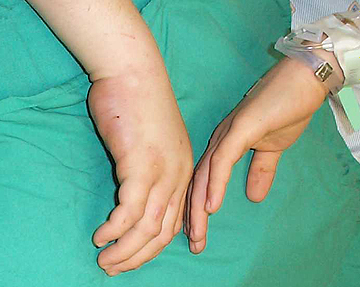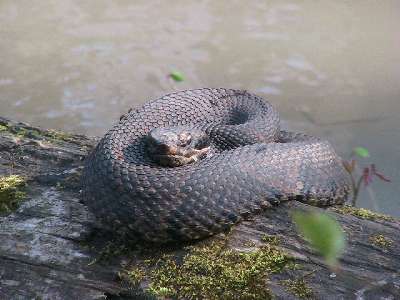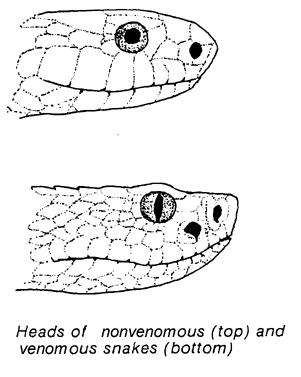Snake Bite
Venomous
Snakebite - Doís and Doníts
Statistically
speaking, your chances of being bitten by a venomous snake are less than
being killed in an automobile accident or being struck by lightning. But in
the rare event that a venomous snake bites you, following a few simple rules
will increase your chances for a successful recovery.
Snakebite
symptoms include pain, swelling, discoloration of the skin at the site of
the bite, nausea and/or vomiting.
1.
Remain calm.
Remember: More people die from bee stings each year than from venomous
snakebites.
2.
Remove shoes,
jewelry and tight clothing from bitten area.
3.
Wash the bite
site
with soap and warm water or rubbing alcohol to remove any excess venom.
4.
Be prepared
to treat for shock and possibly administer CPR.
5.
Get the victim
to the nearest medical facility
as soon as possible. The best snakebite first aid is a set of car keys.
On the other
hand, there are several things you should not do when treating a snakebite
victim:
1.
Do not attempt
to capture, handle or kill a venomous snake.
More people are bitten during these activities than in any other situation.
Take a picture of it.
2.
Do not make
cuts or incisions on or near the bitten area.
You could cut nerves, tendons or blood vessels ó potentially causing more
damage than the snakebite.
3.
Do not apply a
tourniquet or constriction band.
If tied too tight, you could cut off blood flow ó causing more damage than
the snakebite.
4.
Do not give the
victim food, drink, alcohol or other drugs.
This can cause complications in the successful treatment of the bite.
5.
Do not attempt
to suck venom out with your mouth.
You could have a cold sore or other open wound in your mouth, allowing venom
to get into your bloodstream.
Examples of bites. The swelling is why you need to take off
watches, rings and everything near the bite.



Water Moccasin.





Coral snake = red on yellow kill a fellow, red on black, venom lack.
Upper left snake.
Diamond Back rattlesnake .... Bottom snake
Copperhead snake. .... upper right.